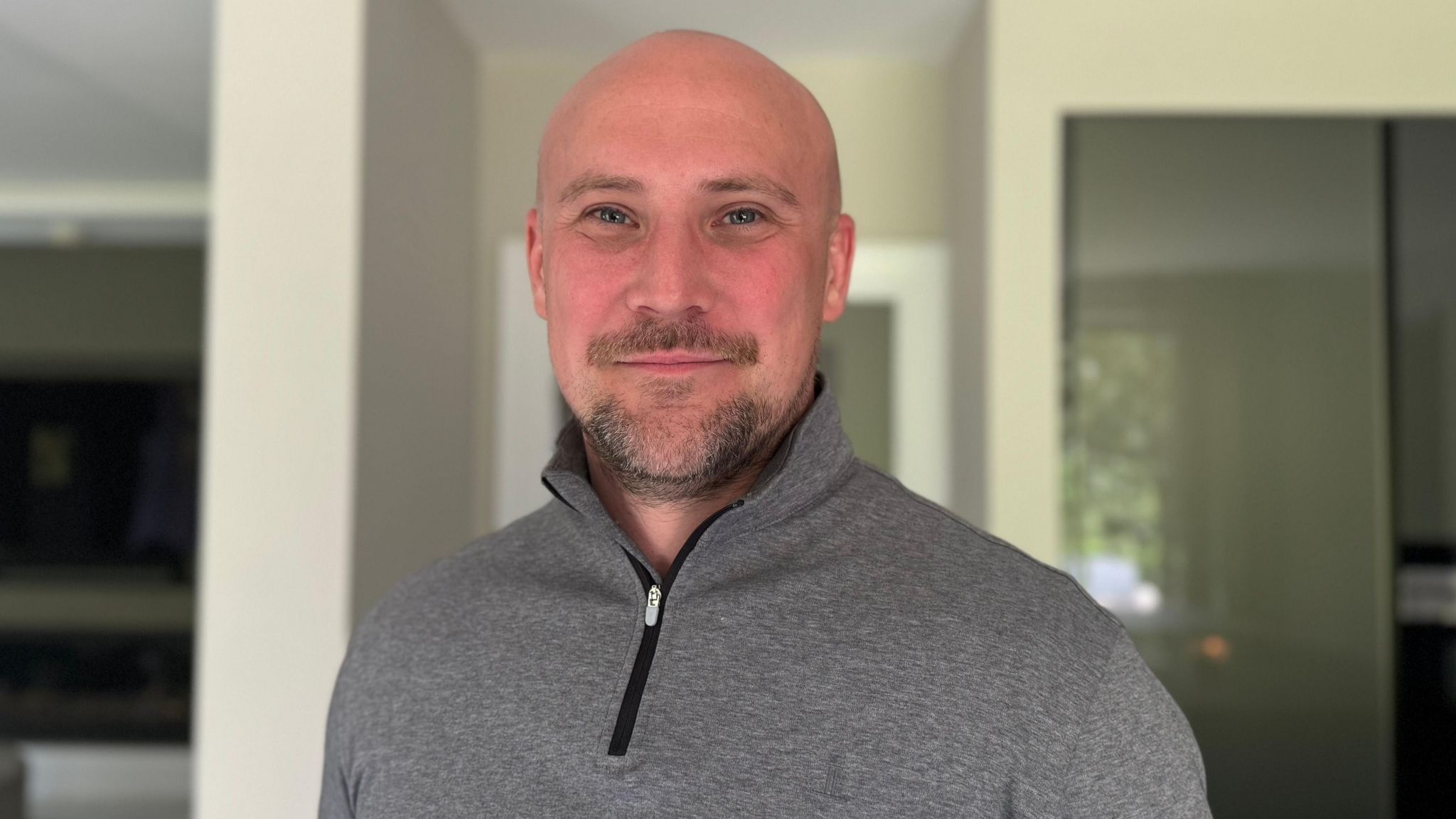'I may not be here if my stroke was at different time'

Paul McCausland suffered a stroke in 2021
- Published
Paul McCausland suffered a stroke in 2021 and said thrombectomy treatment saved his life.
He woke up one morning after 08:00 BST and started to feel off balance.
The next minute he was unable to speak or move, he told BBC News NI.
A few hours later, Mr McCausland received a treatment called thrombectomy at Belfast's Royal Victoria Hospital (RVH).
The treatment is new and most effective when given within six hours of a stroke occurring.
It is only available at one hospital in Belfast between 08:00 and 18:00.
The Department of Health (DoH) estimates that a total of £11.1 million of recurrent funding is required to progress its Stroke Action Plan.
Paul McCausland and his wife Rachel have said he is thankful he is still here with his family
Mr McCausland, 39, said it was sheer luck the timing of his stroke meant he could have the thrombectomy treatment.
"I was very lucky that the two surgeons that could do the treatment were there and I was there at the right time," he said.
"I dread to think what my current state of life would be like, or even if I would be here, if I had suffered my stroke at a different time."
Mr McCausland, a father of two, said the treatment he received saved his life.
"It meant everything to me to have the treatment, it really did save my life. I would dread to think what my quality of life would have been like going forward without it," he said.
He said he is grateful to have his two children, his wife Rachel, his parents and the rest of his family.
"Luckily my parents were staying at the house when I took the stroke. My dad started looking for me as I was gone for over an hour and he found me lying on the bedroom floor, not moving," he said.
When the ambulance arrived he was taken straight to the Royal Victoria Hospital and received a thrombectomy within four hours of having the stroke.
He is now backing calls for a 24/7 thrombectomy service.
"I would urge people to push for this service to be available 24/7, because it can save lives," he added.
Alasdair O'Hara said luck should not come into the treatment of a stroke
The charity, Stroke Association, wants the DoH to make this service 24/7.
Its Northern Ireland director, Alasdair O'Hara, said one person receiving a thrombectomy could potentially save the NHS £47,000 in ongoing care post stroke over the next five years.
"With this treatment people's journey after the stroke can be better because it reduces some of the impacts.
"By putting this intervention in place you're reducing pressure on the system (NHS)," he said.
He said that people feel "lucky" after receiving the treatment.
"It really shouldn't be left down to luck.
"No matter where you are or when you have a stroke you should be able to access this hugely powerful treatment," he said.
Mr O'Hara said he understood the budgetary pressures faced by the DoH but said it promised this service could be made 24/7.
"The target was to deliver it within this year (2024) and we think it's really important that that target is met."
The DoH said while budget constraints have delayed the delivery of these services "progress has nonetheless been made against a range of the priorities set out in the action plan".
It said some "extremely difficult decisions will be required to manage within the budget allocated".
But initial focus will be made to progress the action plan "within current resources", the department said.
What is a thrombectomy?
A thrombectomy involves the insertion of a clot removal device to remove the clot and restore blood flow.
A thrombectomy is a relatively new procedure used to treat some ischaemic stroke patients.
An ischaemic stroke is caused by a clot cutting off the blood flow to part of the brain and is the most common type of stroke.
The thrombectomy involves the insertion of a clot removal device, through a catheter, to pull or suck out the clot and restore blood flow.
It is able to remove clots which are too big to be broken down by clot-busting drugs.
A thrombectomy is normally only performed up to six hours after symptoms show and it is only suitable for around one-in-10 stroke patients.
Source: Stroke Association